|
|

|
|
Arthur A. Denny
Picture ID: SHS 3,772
|
|

|
|
David Thomas Denny ca 1875
Image # MP541a |
|
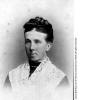
|
|
Louisa Boren Denny
First Bride in Seattle,
Wife of David Denny |
|
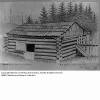
|
|
Arthur Denny's cabin at Alki Point
Picture ID: MOHAI 83.10.6,111
|
|
|
|

|
|
Battle of Seattle
SHS 18,380
This photo of Emily Inez Denny's painting shows Seattle's white settlers running to safety in the city's blockhouse. The ship "Decatur" sits offshore in Elliott Bay, helping to protect the settlers from a threatened Indian attack. Denny was only three years old at the time.
|
|
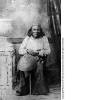
|
|
Chief Seattle, (Chief Sealth)
SHS 67(1)
Sealth, known to settlers as Chief Seattle, became the leader of the Suquamish and Duwamish people sometime around 1810. When settlers started moving to the Elliott Bay area in the 1850s, Chief Sealth stayed friendly to the newcomers and urged his people to do the same. The city of Seattle was named for the chief, but it is said that he felt uneasy about his name being used in this way.
|
|
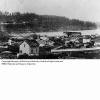
|
|
Western Mill and southern Lake Union
MOHAI 83.10.6,380
Pioneer David Denny owned the land south of Lake Union. In 1882, he opened the Western Mill on the lake's southern shore. A small community soon grew up around the lumber mill. By the end of the 1880s, streetcars and roads had been built, and the area lost its rural look.
|
|

|
|
Rolland H. Denny ca 1892
Image # SHS2188 |
|
|
|

|
|
Students outside Oak Lake School, 1894
# 2003.12.5
The one-room Oak Lake School opened in 1886 near what is now Washelli Cemetery, north of Seattle. For many years Oak Lake was the only school in the northern part of King County. After several moves and additions, the school opened its first permanent building in 1914 at 10040 Aurora Avenue North.
Left to Right: Herman Bolt, Mr. Course & Baby, Emma Miller, Martha Denny, Tom McCombs, Clark Dye, Carl Miller, John Bower, Seth Nelson, Retta Denny, Mike Bower, Ida Denny, Paul Stewart, Joe Bower, Harvey Rothweiler, Pearl McCombs, Lawrence Dye, Lara Denny. |
|
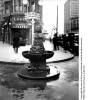
|
|
Chief Sealth fountain, ca 1925
Picture ID: MOHAI 83.10.3,080.3
In 1909, sculptor James Wehn designed three fountains with the bust of Chief Seattle. One was placed at Pioneer Square, another on Occidental Street and a third at the intersection of Fourth and Westlake Avenues. The fountains were designed to provide water for people, horses, and dogs.
|
|
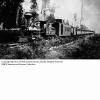
|
|
Locomotive A.A. Denny, 1880
Picture ID: MOHAI 83.10.6,275
Seattle's first railroad, the Seattle and Walla Walla Railroad, was built to carry coal from the mines east of Lake Washington to the Seattle waterfront. The narrow-gauge railroad's first locomotive was named the "A.A. Denny" in honor of one Seattle's founders, Arthur A. Denny. In 1880, the railroad became the Columbia and Puget Sound Railway.
|
|

|
|
A.A. Denny home
Picture ID: SHS 269 |
|
|
|
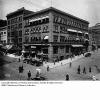
|
|
Denny Building early home of The Seattle Times
MOHAI 83.10.9,589
In 1902, The Seattle Daily Times moved to the Denny Building at the corner of Second Avenue and Union. People walking by on the street could read the posted news bulletins and watch the presses through the basement windows. During elections or baseball games, they could stop by to get the latest results.
|
|

|
|
Soapmaking at the John Denny farm
SHS 16,534
In this 1906 photo, Lora Denny makes soap in her north Seattle farmyard. Soap was usually made by mixing lye, from wood ash, with animal fat. This was hot and messy work. Mrs. Denny is wearing a sunbonnet and old clothes as she stirs the kettle over an open fire.
|
|

|
|
Denny School,
SHS 11,777
Seattle grew fast in the 1880s. Denny School was overcrowded from the day it opened in 1884 in what was then Seattle's north end. Two wings were soon added to hold additional classrooms. The west wing was torn down in 1911 when part of Denny Hill was regraded. Classes continued in the rest of the building until 1928, when it was torn down during the final regrading of the hill. The school's bell tower was preserved in Denny Park until 1950.
|
|

|
|
Lawrence D. Lindsley photographer
SHS 13,368
Photographer Lawrence Denny Lindsley was the grandson of Seattle pioneers David T. and Louisa Boren Denny. He bought his first camera through a magazine subscription, and got his start as a scenic photographer with the firm of W.P. Romans in 1890. Lindsley started his own business in 1919. He is particularly known for his photographs of the Lake Chelan, Grand Coulee, and Mount Rainier areas.
|
|
|
|

|
|
David Denny at Lake Keechelus cabin, 1899.
Image # 2002.3.1470
During the summer of 1899, Seattle pioneer David Denny supervised the improvement of 27 miles of wagon road through Snoqualmie Pass, from North Bend, Washington, to the south end of Lake Keechelus. Between the beginning of June and the end of September, workers blasted and moved rocks, built bridges, resurfaced parts of the old road with logs and relocated the road completely where necessary. |
|

|
|
David Denny at log cabin near Lake Keechelus
SHS 9,441
This 1899 photo shows David Denny sitting outside his cabin near Lake Keechelus. He lived at the cabin during the summer he worked on the Snoqualmie Pass wagon road. The cabin was near some of the Denny family's mining claims.
|
|

|
|
Mt Rainier over Seattle, 1900
Photo by A.B. Wilse
Picture ID: MOHAI 88.33.8
In 1900, Anders Wilse stood on top of Denny Hill to take this photo of downtown Seattle, Beacon Hill, and Mount Rainier. At that time, much of Beacon Hill was still wooded. Mount Rainier seems to float in the distance. The Pioneer Square area is in the lower right of the photograph.
|
|

|
|
Denny Hotel Lobby, 1895
SHS2485
Seattle's Hotel Washington, known as the Denny Hotel when it opened in 1890, sat grandly on top of Denny Hill between Second and Fourth Avenues and Stewart and Virginia Streets. The elegant building survived only until 1906, when the western part of Denny Hill was leveled.
|
|
|
|

|
|
Artist's rendering of Denny Hotel, Seattle, ca. 1890
SHS2314
Also known as Hotel Washington, which sat upon Denny Hill. |
|

|
|
Pioneer group at Alki monument, Nov 18, 1905
Picture ID: MOHAI 83.10.7,432
On November 18, 1905, the surviving members of the Denny Party gathered at their old landing place on Alki Beach to dedicate a monument to the founding of Seattle. According to the inscription, the monument was erected by the Washington University State Historical Society and presented by Leonora Denny.
|
|

|
|
Dedication of Pioneer Monument at Alki Point, Nov 18, 1905
Image # 1983.10.7430.1 |
|

|
|
Denny Hall Auditorium
University of Washington, 1905
The Denny's donated land to help establish the University of Washington.
Image # 1983.10.7000
The first building on the present campus of the University of Washington was Denny Hall, originally known as the Administration Building. At that time, all university activities took place in this single building. Denny Hall had science labs, a library, a natural history museum, administrative and faculty offices, ten classrooms, a music room, a lecture hall, and an assembly hall seating 736 people. |
|
|
|

|
|
Denny family picnic on Snoqualmie River
1917 or 1918.
MOHAI 87.89.77 |
|

|
|
Looking into Tunnel B, 1901
MOHAI 87.89.33
David Denny and members of his family owned several mining claims at Gold Creek, below Snoqualmie Pass, on the eastern side of the Cascade Mountains. In 1901, Lawrence Denny Lindsley snapped this photograph of his uncle Victor Winfield Scott Denny (known as Win) inside Tunnel B in one of the Denny mines. They were apparently setting powder explosives to drive the tunnel deeper.
|
|

|
|
Denny cabin on the east side of the Cascades
MOHAI 86.2.52
Sometime during the 1910s, Lawrence Denny Linsley, professional photographer and grandson of David Denny, took this photograph of his uncle, Victor W.S. Denny and another man at a log cabin near their Gold Creek claims. Denny (seated) is pointing towards the nearby mountains.
|
|

|
|
Denny Clay Company buildings
MOHAI 83.10.6,573.2
By 1910, the Denny-Renton Clay and Coal Company was one of Renton's most important businesses. Company workers removed the clay from nearby cliffs using high pressure hoses. Other laborers formed and baked the clay into bricks, sewer tile, terra cotta and other building materials. By 1917, the Denny-Renton Clay Company was reportedly the world's largest producer of street paving brick.
|
|
|
|

|
|
House for sale in downtown Seattle
MOHAI 83.10.2,016
By the 1920s, Seattle had changed from a city of small, wooden buildings to a city of brick and stone.
This photo was taken about 1919 on Fourth Avenue, between Columbia and Marion Streets. It shows Seattle's oldest standing home now for sale, dwarfed by the growing city. To the left of the house is the red brick Rainier Club. Behind it is the domed First Methodist Church
|
|

|
|
Seattle Streetcar, 1917
MOHAI 83.10.10,585
The Seattle and Rainier Valley Railroad ran from downtown Seattle to Renton. For many years, this streetcar line was the main means of transportation between the city and the southern towns. In 1913, the rail line pleased baseball fans by offering special cars to Dugdale Field.
This photo, taken in about 1917, shows a Seattle and Rainier Valley streetcar heading south. The sign on the front fender says "Northwestern League baseball today. Take this car." A newsboy stands near the car, hoping to sell papers.
|
|

|
|
Emily Inez Denny, Seattle, ca. 1884
SHS2191
|
|

|
|
Emily Inez Denny painting at easel, probably in Seattle, ca. 1890
|
|
|
|

|
|
Emily Inez Denny
SHS 2,690
Emily Inez Denny, known as Inez, was born in Seattle in 1853. She was the first white child born in Seattle and the oldest child of pioneers David and Louise Boren Denny. Between the 1860s and her death in 1918, Inez Denny drew and painted landscapes of the Puget Sound region and scenes from Seattle's early history. Many of her works are in the collections of the Museum of History and Industry.
|
|

|
|
Rolland H Denny at birthplace of Seattle monument at Alki Beach, Seattle, 1938
Image # PI24431 |
|

|
|
Mt. Rainier and Lake Washington
SHS 7,644
When the weather is clear, Mount Rainier, at over 14,000 feet tall, dominates the scenery in the central Puget Sound region. This photograph, taken by Seattle photographer George Braas, shows Mount Rainier over Lake Washington. The photograph was probably taken around 1900 from Seattle's Mount Baker district, looking across the lake towards Mercer Island (l.) and Bailey Peninsula (r.), now Seward Park.
|
|

|
|
Mount Rainier and Lake Washington
MOHAI 83.10.PA24.5
For many years, professional and amateur photographers have tried to catch good views of Mount Rainier as it rises over Seattle. The Mountain has become a symbol of the city.
Sometime around 1910, a photographer from the firm of Webster & Stevens took this photo from the western shore of Lake Washington near Leschi.
|
|
|